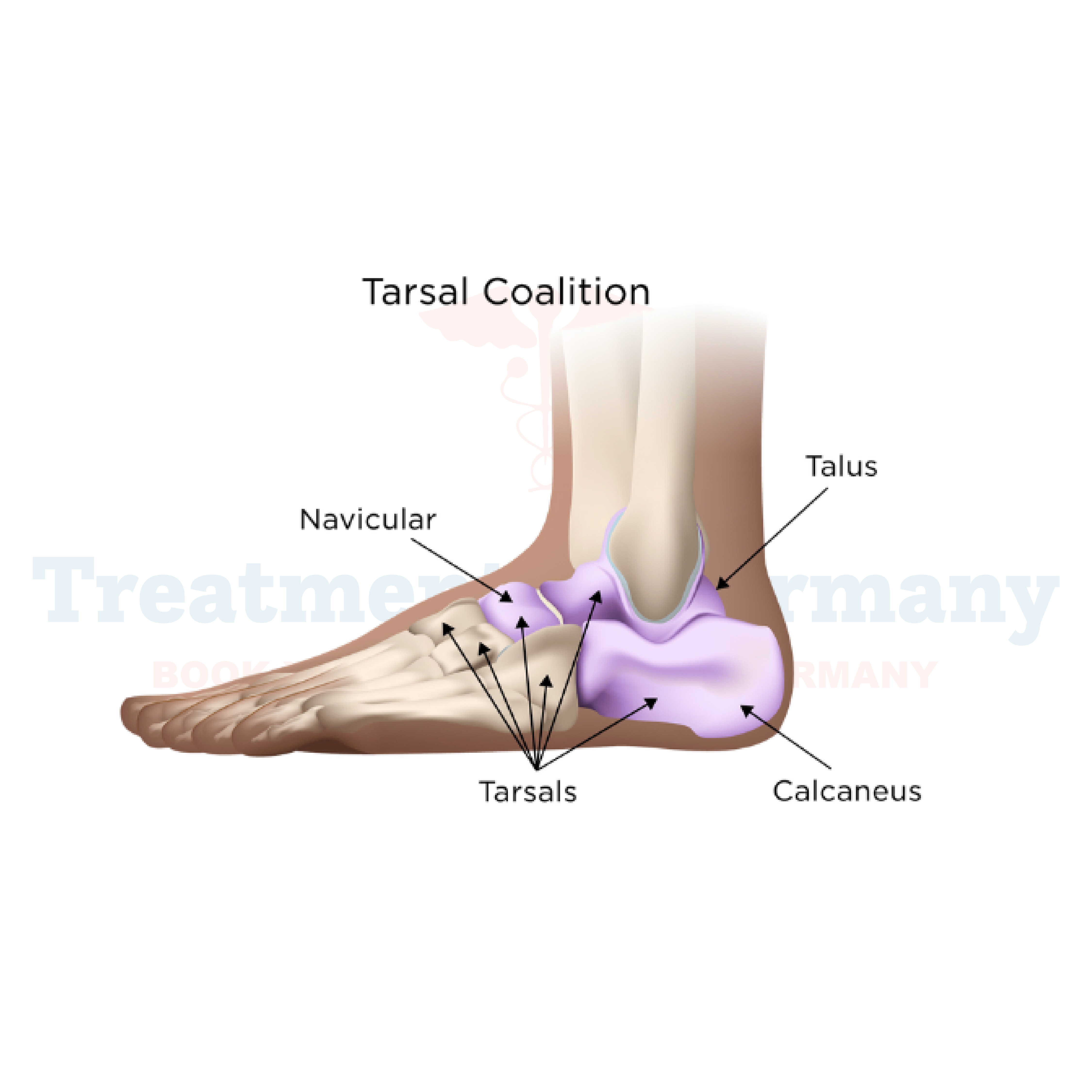What is Tarsal Coalition?
Tarsal coalition refers to an abnormal connection between two or more bones in the foot, specifically in the tarsal region.
This condition typically occurs during fetal development when separate bones fail to properly divide, leading to a fusion of bones that should be separate. The most common areas affected are the calcaneonavicular and talocalcaneal joints.
Side Effects of Tarsal Coalition
Patients with tarsal coalition often experience symptoms such as:
- Pain: Persistent pain in the affected foot, especially during physical activity or prolonged standing.
- Stiffness: Limited flexibility and decreased range of motion in the affected foot.
- Fatigue: Tiring easily due to the strain placed on the foot during normal activities.
- Swelling: Occasional swelling around the affected joint, particularly after physical exertion.
These symptoms can vary in intensity depending on the extent of the coalition and the activities performed.
How is Tarsal Coalition Diagnosed?
Diagnosing tarsal coalition typically involves a combination of clinical examination, medical history review, and imaging studies such as:
- X-rays: These are used to visualize the bones and detect any abnormalities or fusions.
- CT scan (Computed Tomography): Provides detailed cross-sectional images of the bones and joints, offering a clearer view of the coalition.
- MRI (Magnetic Resonance Imaging): Helps to assess soft tissues and can detect any associated abnormalities.
Accurate diagnosis is crucial for planning appropriate treatment.
Potential Treatment of Tarsal Coalition
Treatment options for tarsal coalition depend on the severity of symptoms and the patient's age:
- Conservative Management: Initially, non-surgical approaches may be recommended, including rest, physical therapy, orthotic devices (such as shoe inserts), and anti-inflammatory medications to manage pain and inflammation.
- Surgical Intervention: If conservative treatments are ineffective, or if the coalition causes significant pain and impairment, surgical intervention may be considered. Surgery aims to resect the abnormal coalition and restore normal joint function. Post-operative rehabilitation is often necessary to regain strength and mobility.
👉 Contact us for further information and receive a complimentary consultation.

.webp)
.webp)
 (1).webp)
 (1).webp)

.webp)
.webp)
 (1).webp)
 (1).webp)
